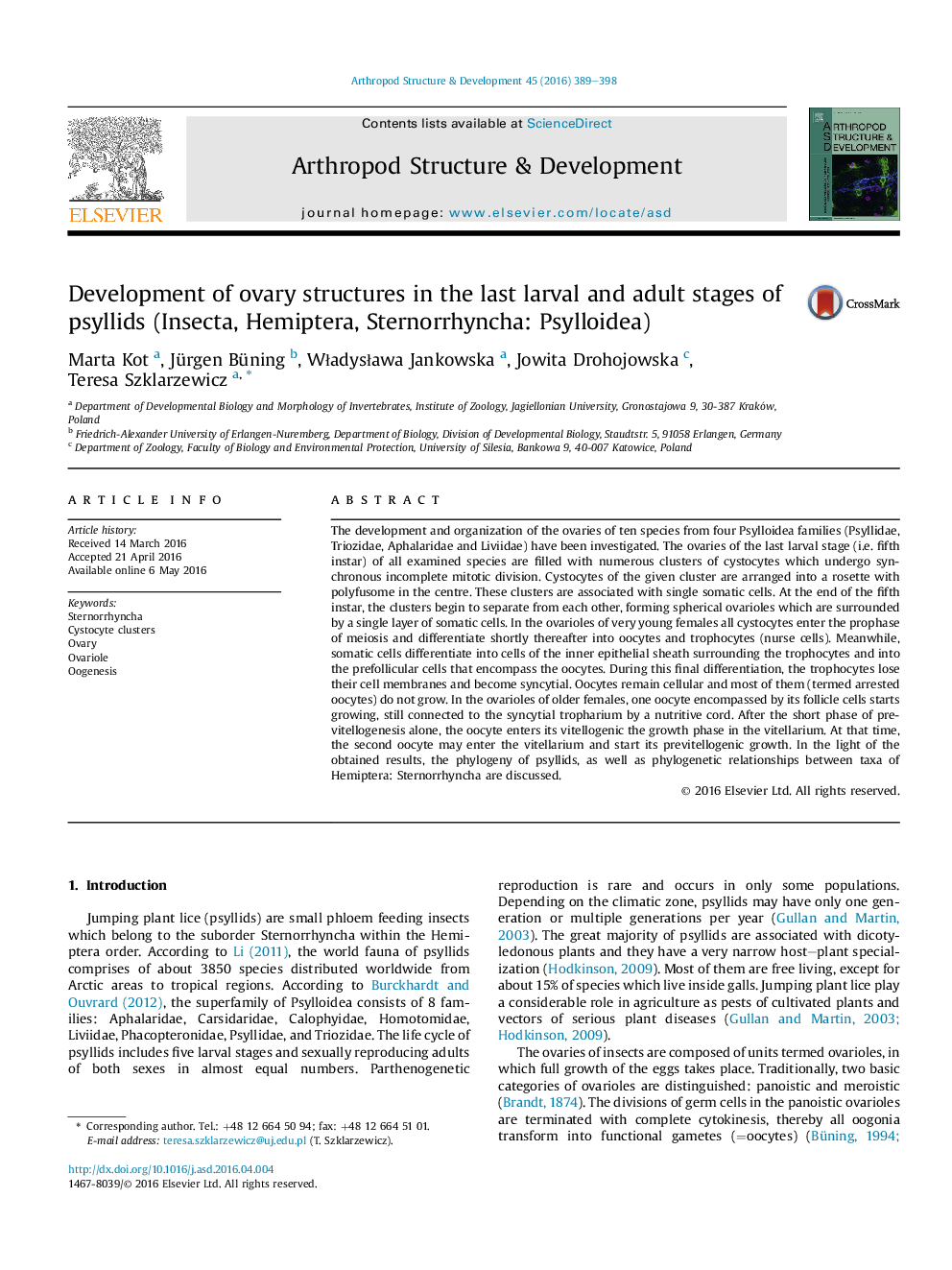| Article ID | Journal | Published Year | Pages | File Type |
|---|---|---|---|---|
| 2778484 | Arthropod Structure & Development | 2016 | 10 Pages |
•The ovaries of the last larval instar of psyllids contain clusters of interconnected cystocytes.•In the centre of each cluster a polyfusome is present.•In the ovaries of the young female all the cystocytes enter the prophase of meiosis.•The ovaries of adult females are composed of numerous telotrophic ovarioles.•The ovariole is subdivided into a syncytial trophic chamber (tropharium) and vitellarium.
The development and organization of the ovaries of ten species from four Psylloidea families (Psyllidae, Triozidae, Aphalaridae and Liviidae) have been investigated. The ovaries of the last larval stage (i.e. fifth instar) of all examined species are filled with numerous clusters of cystocytes which undergo synchronous incomplete mitotic division. Cystocytes of the given cluster are arranged into a rosette with polyfusome in the centre. These clusters are associated with single somatic cells. At the end of the fifth instar, the clusters begin to separate from each other, forming spherical ovarioles which are surrounded by a single layer of somatic cells. In the ovarioles of very young females all cystocytes enter the prophase of meiosis and differentiate shortly thereafter into oocytes and trophocytes (nurse cells). Meanwhile, somatic cells differentiate into cells of the inner epithelial sheath surrounding the trophocytes and into the prefollicular cells that encompass the oocytes. During this final differentiation, the trophocytes lose their cell membranes and become syncytial. Oocytes remain cellular and most of them (termed arrested oocytes) do not grow. In the ovarioles of older females, one oocyte encompassed by its follicle cells starts growing, still connected to the syncytial tropharium by a nutritive cord. After the short phase of previtellogenesis alone, the oocyte enters its vitellogenic the growth phase in the vitellarium. At that time, the second oocyte may enter the vitellarium and start its previtellogenic growth. In the light of the obtained results, the phylogeny of psyllids, as well as phylogenetic relationships between taxa of Hemiptera: Sternorrhyncha are discussed.
